| |
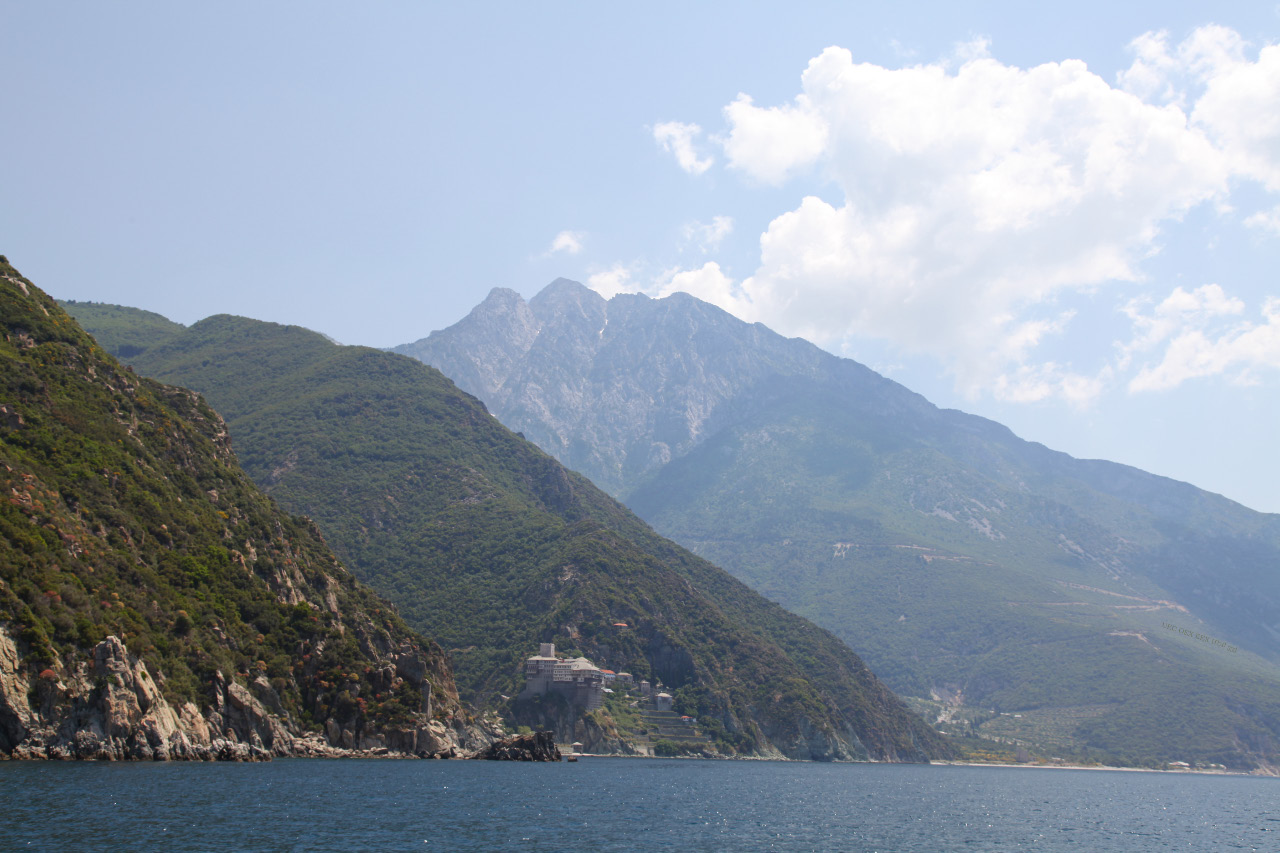 |
|
| |
... the Holy Mountain with view of Dionysiou Monastery - Μονή Διονυσίου |
|
| |
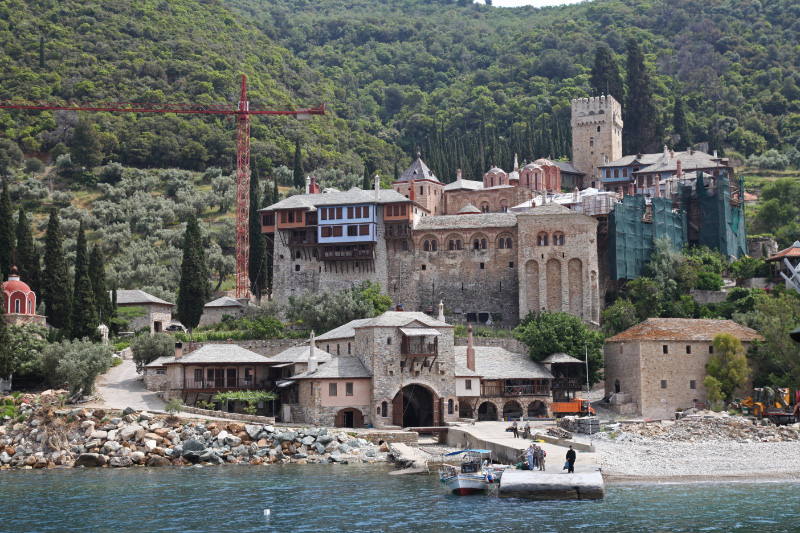 |
| |
|
Μονή Δοχειαρίου - Docheiariou Monastery |
| |
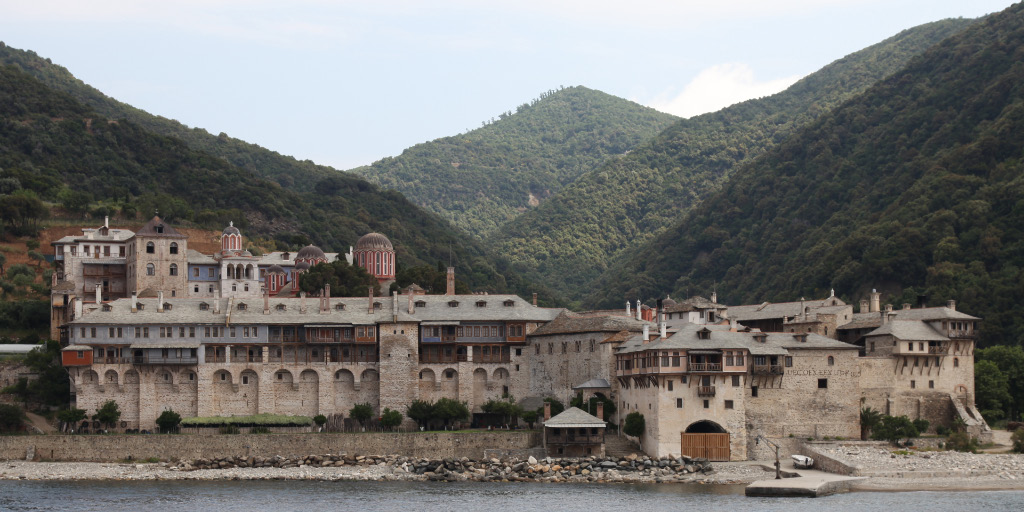 |
|
|
| |
Μονή Ξενοφώντος - Xenophontos Monastery
|
|
|
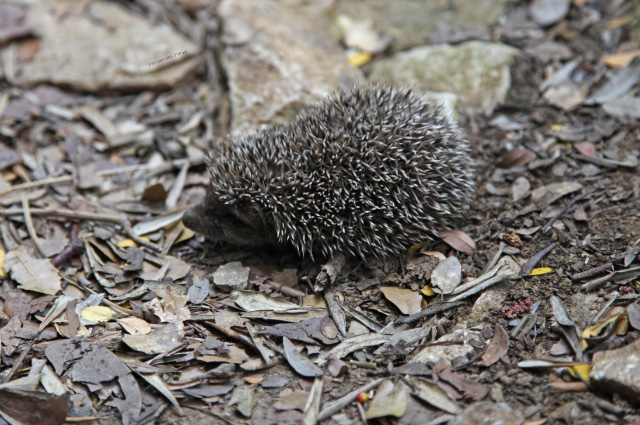 |
|
 |
| Challenging friendship |
|
... fleeting friendship. |
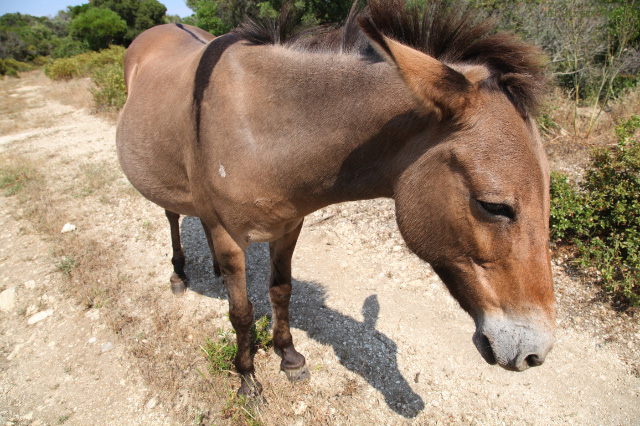 |
|
 |
| ...ready friendship |
|
Just looking. |
|
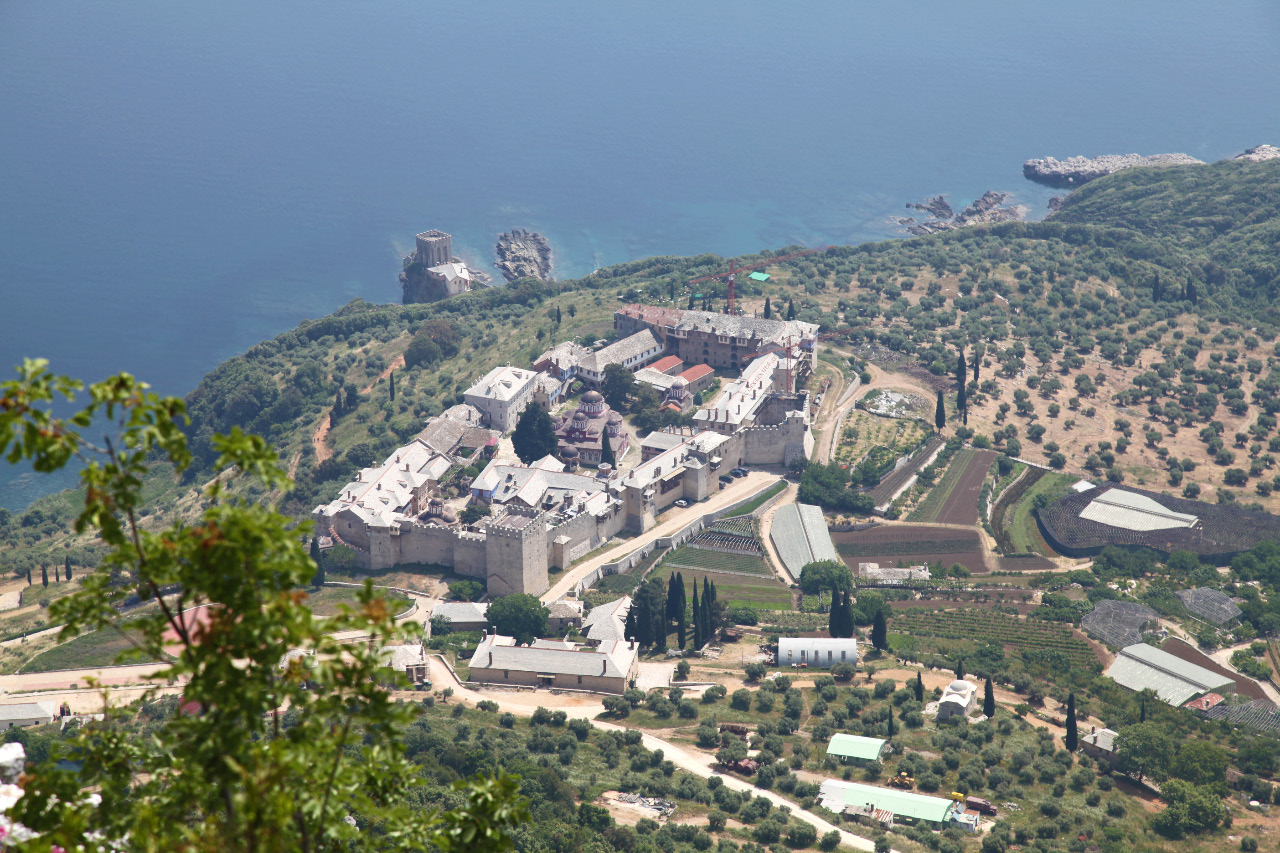 |
|
| |
Μονή Μεγίστης Λαύρας - the Monastery of Great Lavra , founded in 963 by Athanasius the Athonite, marking the beginning of organized monasticism – the coenobitic system – on Mount Athos.
|
|
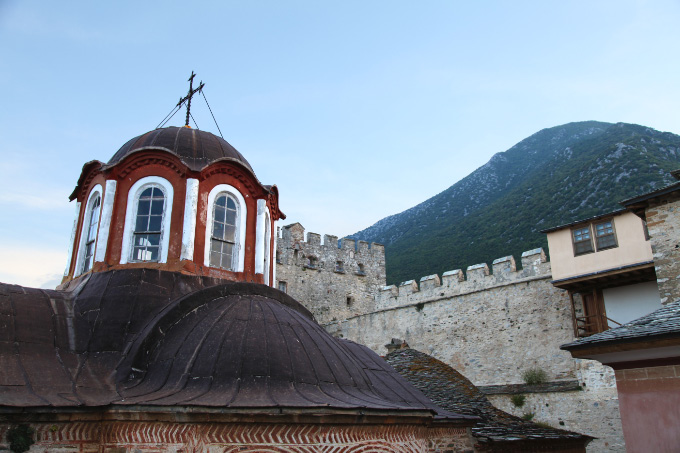 |
|
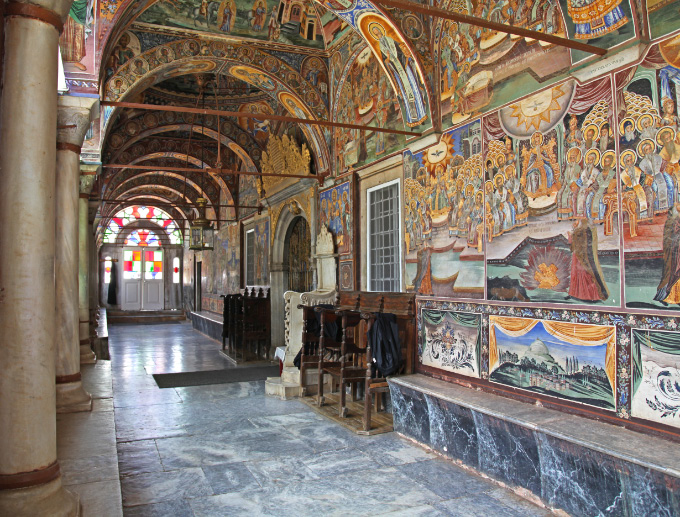 |
| |
|
Narthex of the Church of Saint Athanasius the Athonite, of the Holy Megiste Lavra on Holy Mount Athos, dating, as the Lavra itself does, to 963 Anno Domini, with frescos depicting the Seven Ecumenical Councils. |
|
|
|
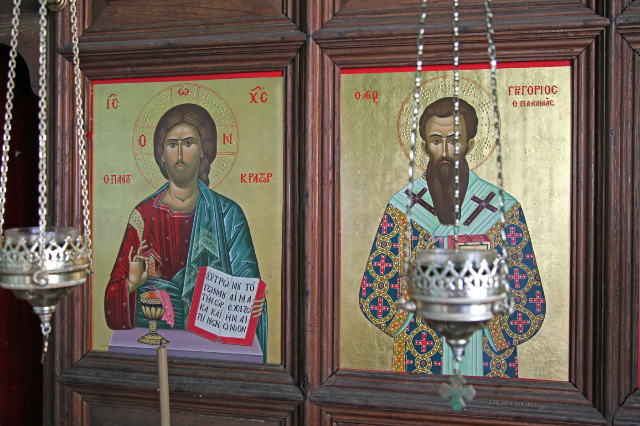 |
|
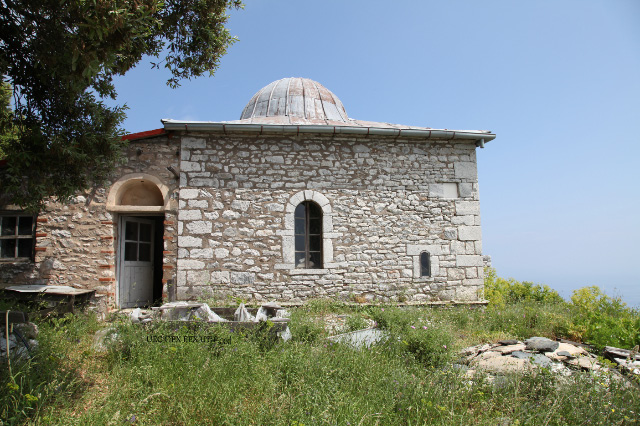 |
| ... icon of The Lord giving us the Eucharist and icon of Saint Gregory Palamas |
|
... the σκήτη - skete where Γρηγόριος Παλαμάς - Saint Gregory Palamas (1296–1359) prayed the prayer of stillness, the prayer of the heart, ἡσυχασμός - Hesychasm. |
| |
|
|
| |
|
|
| |
The theology of the Eastern Church distinguishes in God the three hypostases, the nature or essence, and the energies. The Son and the Holy Spirit are, so to say, personal processions, the energies natural processions. The energies are inseparable from the nature, and the nature is inseparable from the three Persons. These distinctions are of great importance for the Eastern Church's conception of mystical life: |
|
| |
|
|
| |
1. The doctrine of the energies, ineffably distinct from the essence, is the dogmatic basis of the real character of all mystical experience. God, who is inaccessible in His essence, is present in His energies 'as in a mirror,' remaining invisible in that which He is; 'in the same way we are able to see our faces, themselves invisible to us in a glass,' according to a saying of St. Gregory Palamas. (Sermon on the Presentation of the Holy Virgin in the Temple). Wholly unknowable in His essence, God wholly reveals Himself in His energies, which yet in no way divide His nature into two parts--knowable and unknowable--but signify two different modes of the divine existence, in the essence and outside of the essence. |
|
| |
|
|
| |
2. This doctrine makes it possible to understand how the Trinity can remain incommunicable in essence and at the same time come and dwell within us, according to the promise of Christ (John xiv, 23). The presence is not a causal one, such as the divine omnipresence in creation; no more is it a presence according to the very essence--which is by definition incommunicable; it is a mode according to which the Trinity dwells in us by means of that in itself which is communicable--that is to say, by the energies which are common to the three hypostases, or, in other words, by grace--for it is by this name that we know the deifying energies which the Holy Spirit communicates to us. He who has the Spirit, who confers the gift, has at the same time the Son, through whom every gift is transmitted to us; he also has the Father, from whom comes every perfect gift. In receiving the gift--the deifying energies--one receives at the same time the indwelling of the Holy Trinity--inseparable from its natural energies and present in them in a different manner but none the less truly from that in which it is present in its nature. |
|
| |
|
|
| |
3. The distinction between the essences and the energies, which is fundamental for the Orthodox doctrine of grace, makes it possible to preserve the real meaning of St. Peter's words 'partakers of the divine nature.' The union to which we are called is neither hypostatic--as in the case of the human nature of Christ--nor substantial, as in that of the three divine Persons: it is union with God in His energies, or union by grace making us participate in the divine nature, without our essence becoming thereby the essence of God. In deification we are by grace (that is to say, in the divine energies) all that God is by nature, save only identity of nature . . ., according to the teaching of St. Maximus (De ambiguis). We remain creatures while becoming God by grace, as Christ remained God in becoming man by the Incarnation. |
|
| |
|
|
| |
These distinctions in God which are made by the theology of the Eastern Church do not in any way contradict its apophatic attitude in regard to revealed truth. On the contrary, these antinomical distinctions are dictated by a concern for safeguarding the mystery, while yet expressing the data of revelation in dogma. Thus, as we have seen in the doctrine of the Trinity, the distinction between the persons and the nature revealed a tendency to represent God as a 'monad and triad in one', with the consequence that the domination of the unity of the nature over the trinity of the hypostases was avoided, as was the elimination or minimizing of the primordial mystery of the identity-diversity. In the same way, the distinction between the essence and the energies is due to the antinomy between the unknowable and the knowable, the incommunicable and the communicable, with which both religious thought and the experience of divine things are ultimately faced. These real distinctions introduce no 'composition' into the divine being; they signify the mystery of God, who is absolutely one according to His nature, absolutely three according to His persons, sovereign and inaccessible Trinity, dwelling in the profusion of glory which is His uncreated light, His eternal Kingdom which all must enter who inherit the deified state of the age to come. |
|
| |
|
|
| |
|
Excerpt from Chapter Four, Uncreated Energies, of The Mystical Theology of the Eastern Church, by Владимир Николаевич Лосский – Vladimir Nikolaievich Lossky (* 8 June [O.S. 26 May] 1903 – 7 February 1958 †, son of the philosopher Николай Онуфриевич Лосский – Nikolai Onufriyevich Lossky, *6 December [O.S. 24 November] 1870 – 24 January 1965 †). |
|
| |
|
|
|
| |
Jesus answered him, Those who love me will keep my word, and my Father will love them, and we will come to them and make our home with them.
|
|
| |
|
John 14:23 |
|
|
|
|
|
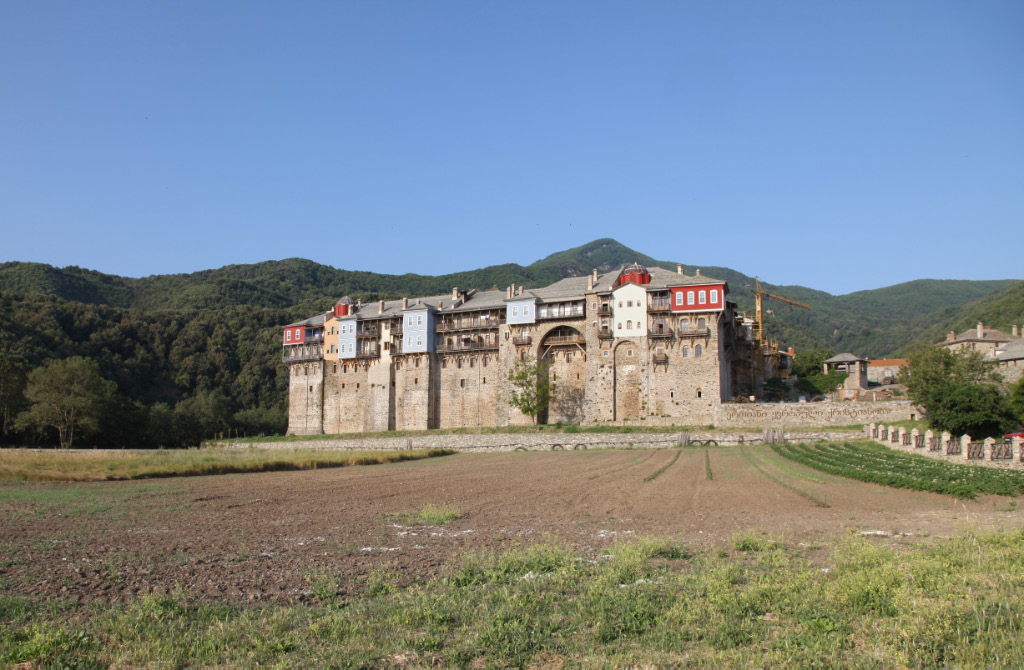
Ιερα Μονή Ιβήρων - ივერთა მონასტერი - Holy Monastery of Iviron, founded 980-983 under leadership of Ioannes the Iberian
|
|
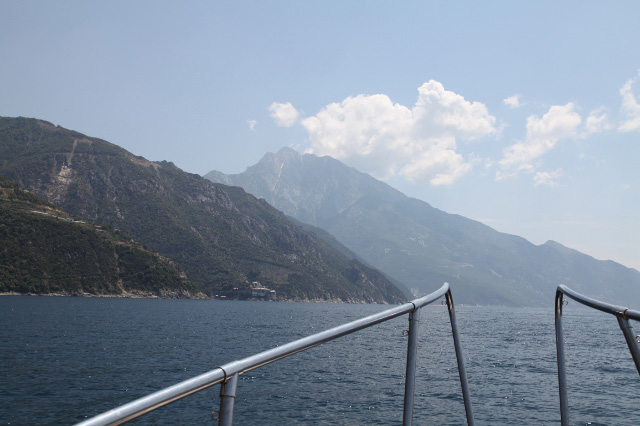 |
|
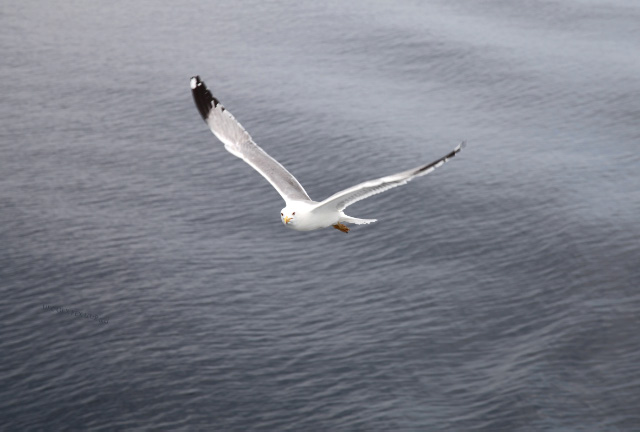 |
| |
|
... But wait. If people see those rails, will they realize I was on a boat and not flying when I took those pictures? |
|
Βατοπέδι – Ιερά Μονή Βατοπεδίου – The Holy and Great Monastery of Vatopedi –Ватопед |
|
| |
|
|
| |
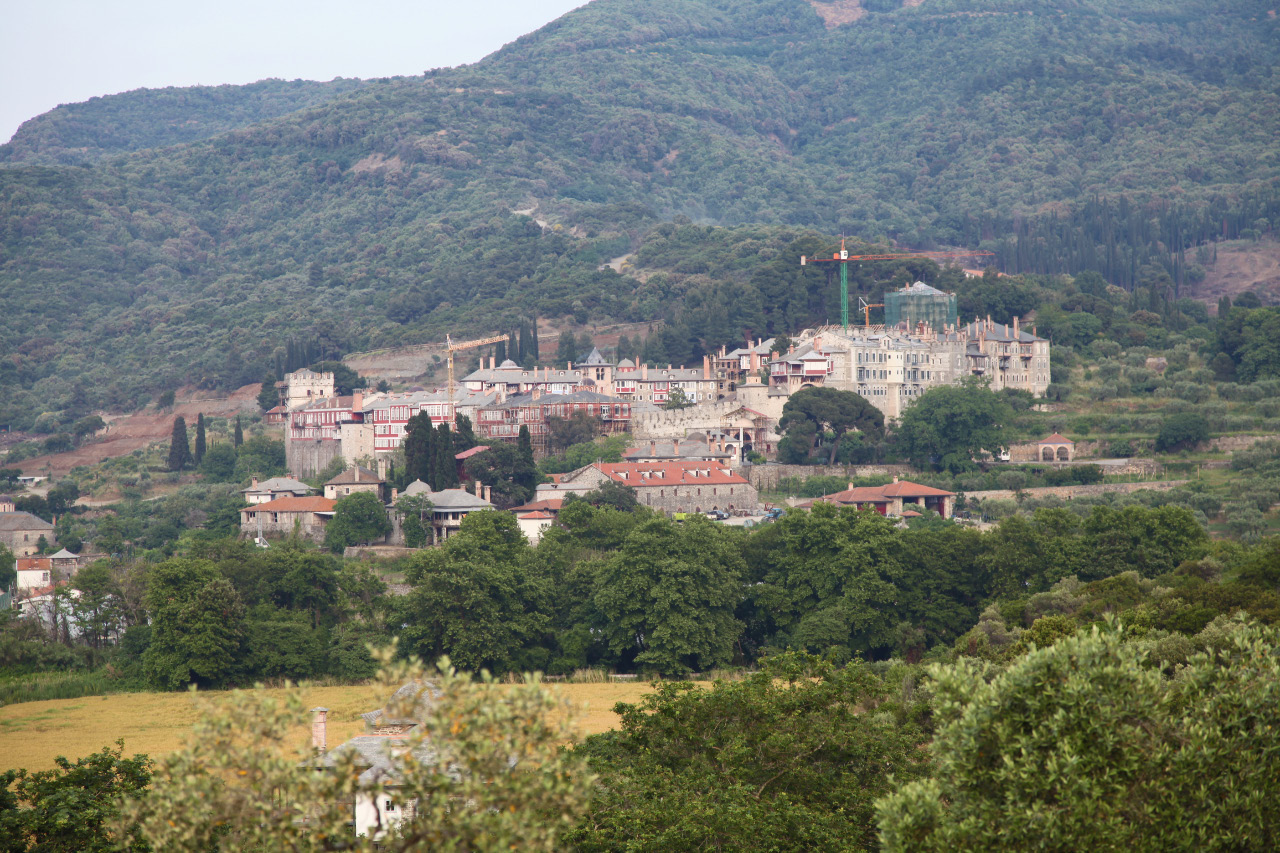 |
|
| |
|
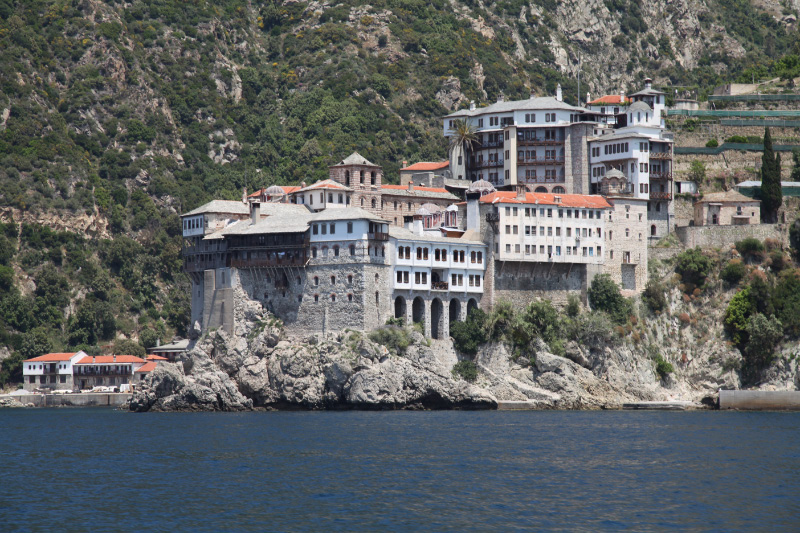 |
|
|
Μονή Οσίου Γρηγορίου - Osiou Grigoriou Monastery |
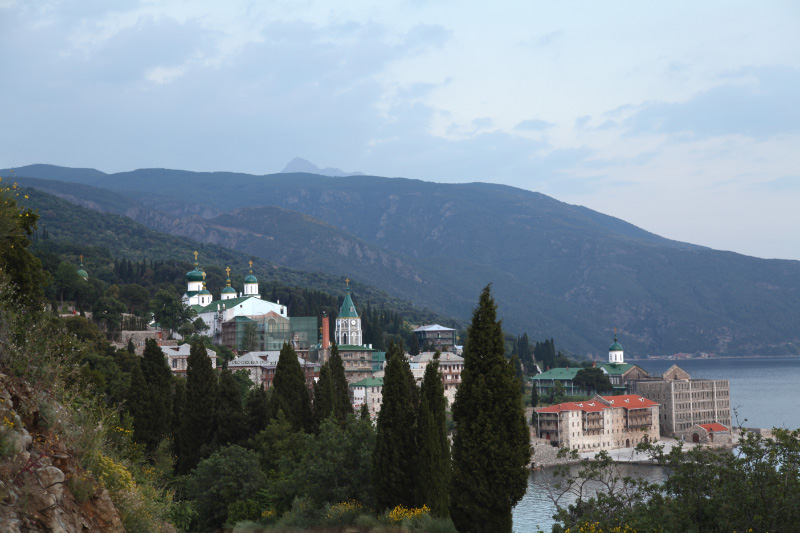 |
|
|
Μονή Αγίου Παντελεήμονος - Монастырь Святого Пантелеимона на Афоне - Saint Panteleimon Monastery,
a.k.a., Ρωσσικόν - Россикон - Rossikon |
|
|
|
|
|
| |
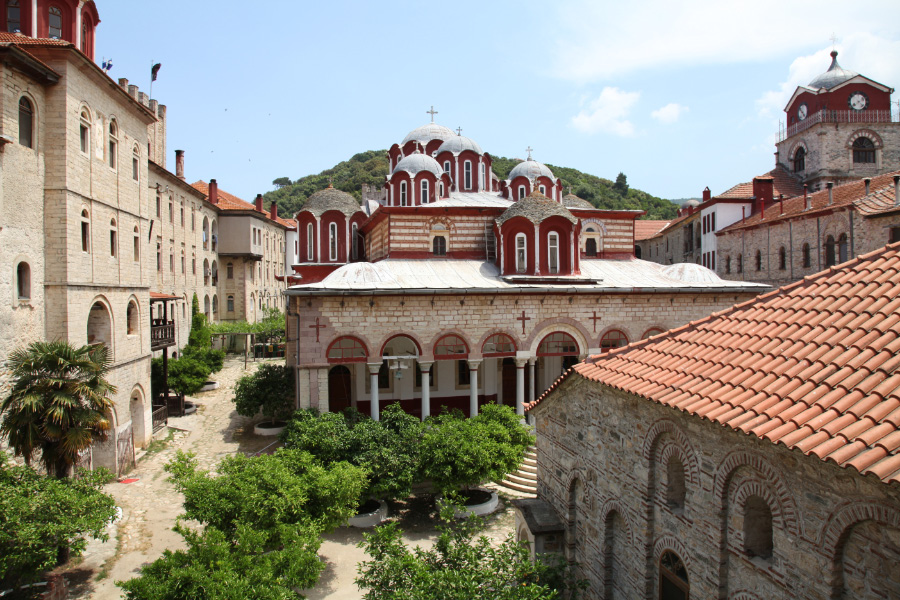 |
|
| |
Ορθοδοξία ή Θάνατος - Orthodoxy or Death — Μονή Εσφιγμένου - Esphigmenou Monastery.
Enemies, but not opposites, rather the mirror image of, the Orthodox counterpart to that tiny minority of Traditionalist Catholics who are Sedevacantist, both "'Catholic' Sedevacantists" and "opposed to 'world orthodoxy' Orthodox" are in full Communion with no one, and both appear to think that all holiness resides in, or at least with, themselves alone.
Confused? If you are not a specialist in this area of study, well you should be. Evil is attached to the sowing of confusion.
By way of the briefest of summaries, it may be said that:
- Old Catholics reject Pastor Aeternus, central to Vatican I, and Papal Infallibility in the pronouncement of binding doctrine on the Eternal Church by any pope on his own authority;
- Sedevacantist Catholics reject any inroads, real, symbolic or imagined, on the doctrine of Papal Infallibility, as also Vatican II and the legitimacy of all popes after Pius XII, regarding them as antipopes;
- Extremist Orthodox such as those at Esphigmenou Monastery essentially reject any dialogue with Catholics, as also with Oriental Orthodox to the limited extent that any of them even know who or want Oriental Orthodox are. With this they have come to reject their own leaders, the recent Ecumenical Patriarchs, Bartholomew of Constantinople and his predecessors Demetrios and Athenagoras. Of course they reject both Vatican I and and Vatican II. They reject as heretics all popes since the 1054 Great Schism at least, regarding them not as bishops. But even if future popes were to satisfy all their demands, such would enjoy only a primacy of honor. Popes would not bear the leadership of the Standing Apostolic Synod, as indeed such Orthodox see Apostle Saint Peter as either having had no successors, or alternatively they embrace an ecclesiology which holds that all bishops are successors of Peter and are so equally.
But the picture is vastly more complicated, as the latter two mentioned of these extremist groups,
Extremist Orthodox and Sedevacantist Catholics, are in fact right on many points.
Both are sometimes bulwarks against the Indifferentism with which "interfaith dialogue" is so very often conflated.
Both fail utterly to understand the vital distinction between on the one hand the holy re-unification of the Orthodox,
Oriental Orthodox and Catholic Churches back into the Orthodox Catholic Church, and on the other hand the unholy false unity
that constitutes most of the Ecumenical Movement, and worse still interfaith syncretism, e.g., "Judeo-Christendom" or "Chrislam".
And yet ignoring, or relegate to the secondary or still lower order of importance, that which is near the center
of God's explicitly expressed wishes is evil, as it is also itself a kind of heresy. |
|
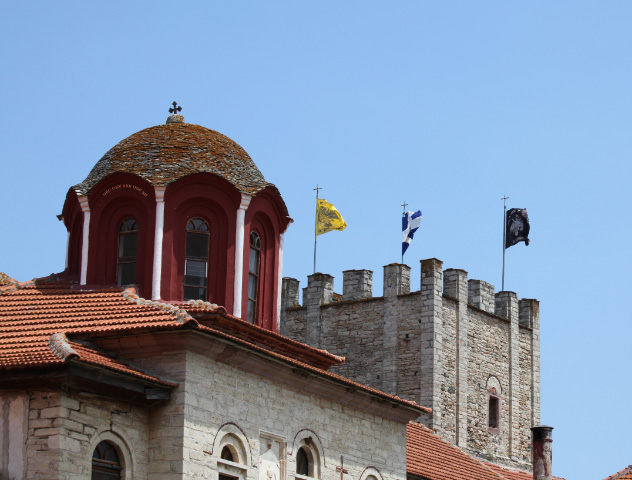 |
|
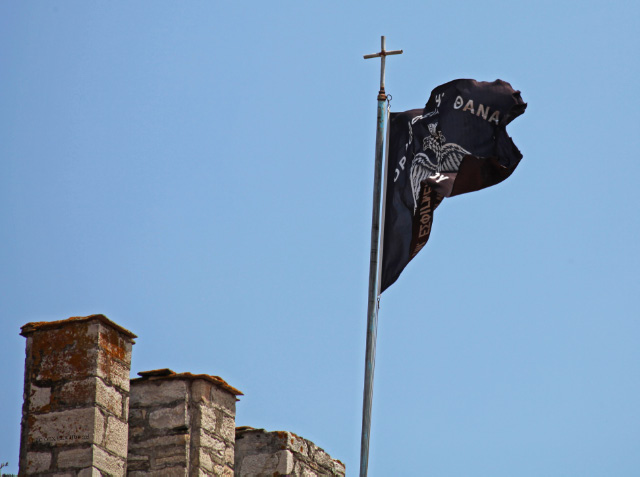 |
| |
|
|
|
|
|
|
|
| |
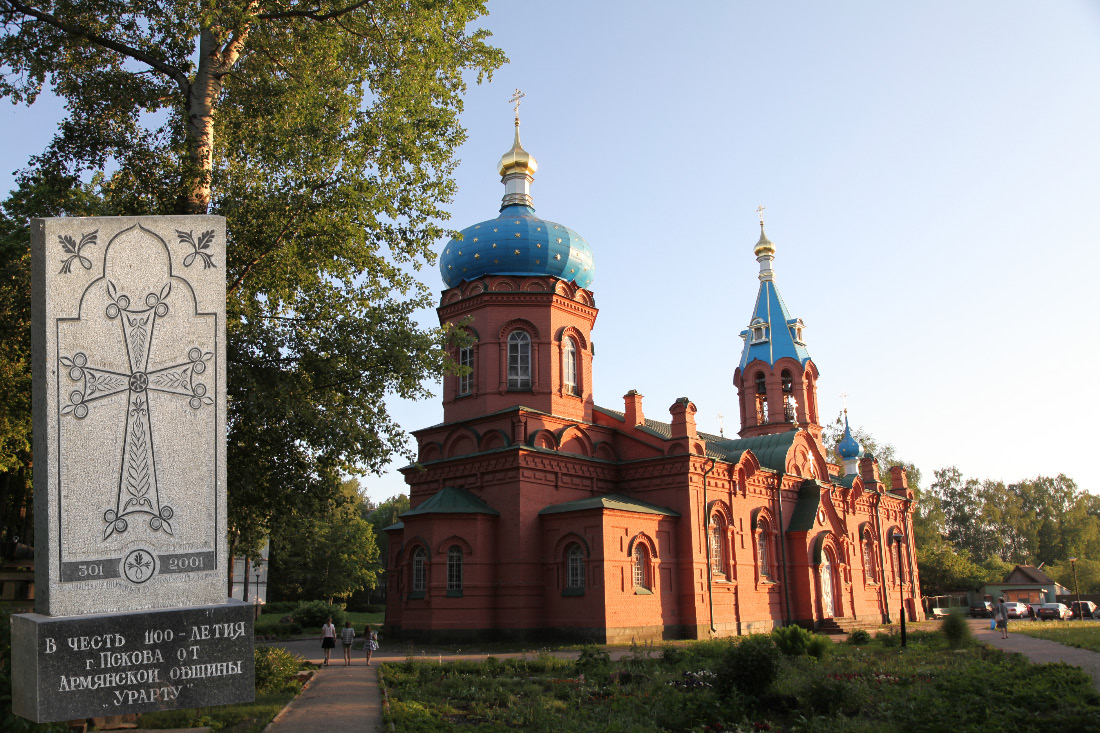 |
|
| |
|
|
|
|
| |
301 – 2001
В Честь 1100 Летия
г. Пскова от
Армянской Общины
„Урарту” |
|
Храм Александра Невского в Пскове – Church of Alexander Nevsky in Pskov
with monument outdoors and east of the apse
Honoring the Christianization of Armenia in 301 Anno Domini |
|
| |
|
|
|
|
| |
Soviet solidarity enduring? Yes probably. A rare example of good coming out of that shared experience. Such monuments honoring the Armenian Church and her faithful — Oriental Orthodox; Non-Chalcedonians; not in Communion with the Orthodox, Russian or otherwise — in Russia and on the grounds of Russian Orthodox Churches, while not exactly common, are to be found. Similar tributes to, similar grace shown to, Catholics and their Churches, including those in the various "Eastern Rites", are unheard of, that portion of the Schism being circa six centuries shorter in duration vis-à-vis the Schism at and after Chalcedon (in which conflict Catholics and Orthodox were on the same side), notwithstanding. |
|
|